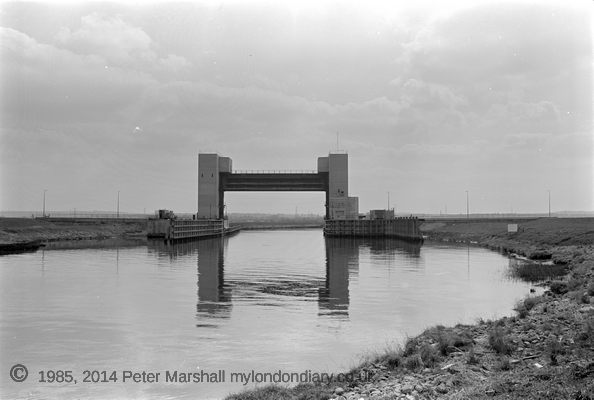
Flood barrier at mouth of River Darent, 1985
I’ve published or exhibited very few of the images I took along the Thames Estuary in the outer boroughs of Greater London and North Kent in the 1980s. A handful appeared with a couple of articles I wrote in ‘Amateur Photographer’ at the time, and one or two were in various shows. A few are already on the web too, a couple on this site in a post Controversial Landscapes a little over a year ago.
There were various reasons for this, then and now. By the time I’d actually finished the project, working on odd days for a little over a year, I was beginning to work on another larger project on London which was to take up much of my next 15 years.
I was also having some technical problems. Wanting more detail and smoother tonality in particular in the wide-open landscapes I was working much of the time with Kodak’s Technical Pan, discontinued around ten years ago (they stopped making it some years earlier but had a large fridge.)
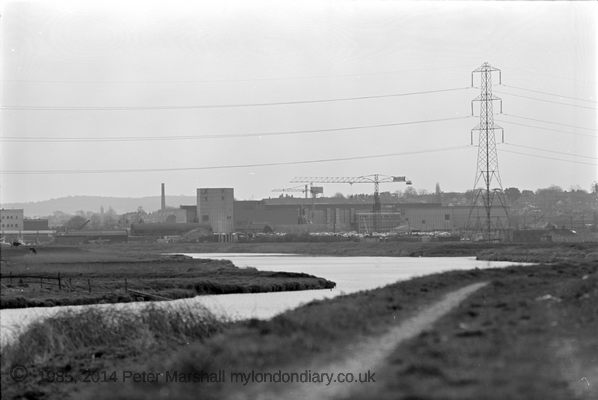
River Darent, 1985
It was a film developed for technical purposes as the name suggests, and was a panchromatic film with extended red sensitivity, rendering reds lighter and blues darker than normal pan films. Kodak described it as a versatile film and their “slowest and finest-grained black-and-white film for pictorial photography (when developed in KODAK TECHNIDOL Liquid Developer).” It had been produced at first for applications such as microfilm and astronomy and normal development gave a contrast that was way too contrasty for printing on any available photographic papers.
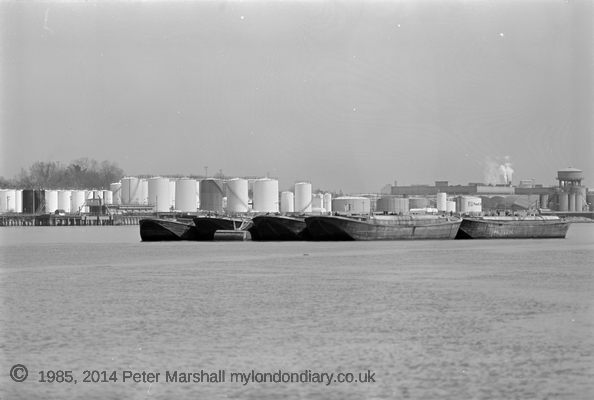
View across the Thames to Purfleet, 1985
For high contrast uses it could be exposed at reasonable ISO, typically ISO 125, but to get normal contrast involved using dilute or modified developers that required several stops more exposure – typically I was exposing it at perhaps ISO 12 or 25, and with some developers even at ISO 6. Until Kodak’s own Technidol became my developer of choice, the results were often dismal, with contrast either too high or too low and a high risk of both uneven development and underexposure. But when you were fortunate the results were really only limited by your lenses. It was often said it produced ‘5×4’ quality from 35mm and that could be more or less true.
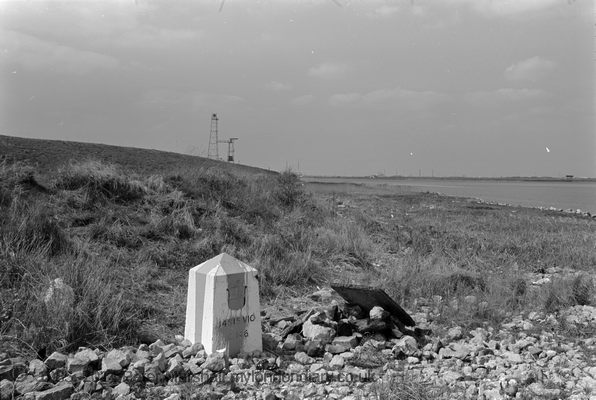
River Thames, 1985
The downside, apart from the many images spoilt by development faults was having to carry and a tripod to avoid any camera shake with these low ISOs. Many of the places I visited were some way from convenient public transport and typically I was walking perhaps ten or twelve miles a day carrying my gear, and the extra 5.5 lbs of the Manfrotto and head was often a literal pain. I tried lighter alternatives, but found nothing sufficiently tall and solid. It perhaps led to my aversion to tripods, which to this day I seldom use outside the house and garden.
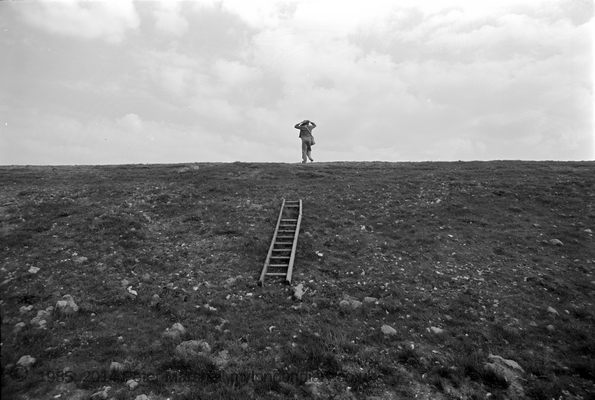
River Wall, River Thames, 1985
My interest in this project came in particular from two sources, the first a geography text, South East England, Thameside and the Weald, by Roy Millward and Adrian Robinson (1971), which contained a section ‘The cement industry of Lower Thameside’, and the rather more fanciful and poetic ‘Pilgrimage of the Thames’ by writer and illustrator Donald Maxwell (1932) whose journey began at Gravesend and finished at Oxford. In the preface he writes that in existing books on the river “I realised that no attention whatever had been paid to many matters that I, for one, find thrillingly interesting.” and goes on to give several examples beginning with “Who has written on the cement country with any conviction or attention?” It seemed something of a photographic challenge too as I looked at his drawing of the ‘The Ravine of Greenhithe’.
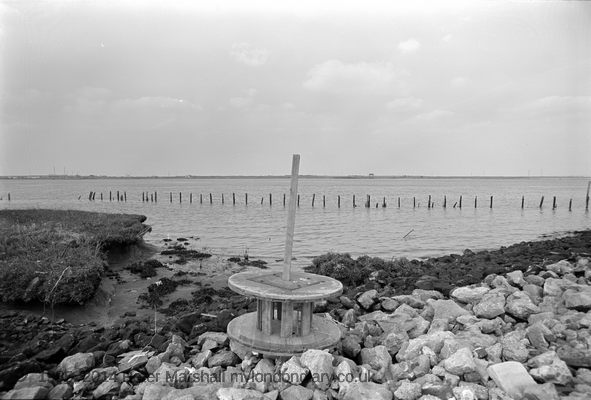
River Thames, 1985
My first visit was for a simple walk from Slade Green station (the last in Zone 6 on a Travelcard) back along by the Rivers Darenth and Thames to Erith, and then to leave the riverside and make my way down to Belvedere station for the journey home, and the pictures here are from the first half of that day.
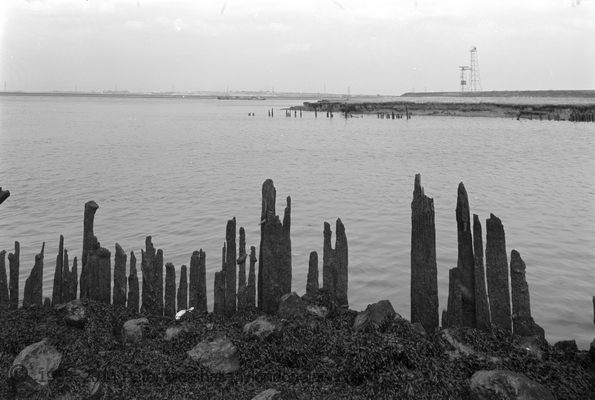
River Thames, 1985
I’ve revisited the area occasionally over the years, and some later panoramas are in my book Thamesgate Panoramas where the Blurb preview has a selection of 36 pages. Like most of my books it is available as a PDF, either from Blurb and also in a slightly better version at the same price direct from me.
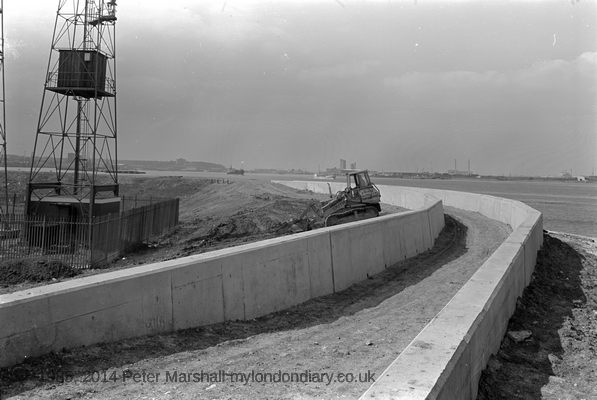
River Wall, River Thames, 1985
I’ll write more about this work, and how some of the later images were made from the negatives using the D800E in some later posts. But all of this first set – which are displayed here as ‘unspotted’ work images are from high-res scans on the Minolta Dimage Scan Multi-Pro.
______________________________________________________
My London Diary : Buildings of London : River Lea/Lee Valley : London’s Industrial Heritage
All photographs on this and my other sites, unless otherwise stated, are taken by and copyright of Peter Marshall, and are available for reproduction or can be bought as prints.
To order prints or reproduce images
________________________________________________________
One thought on “South of the Thames”